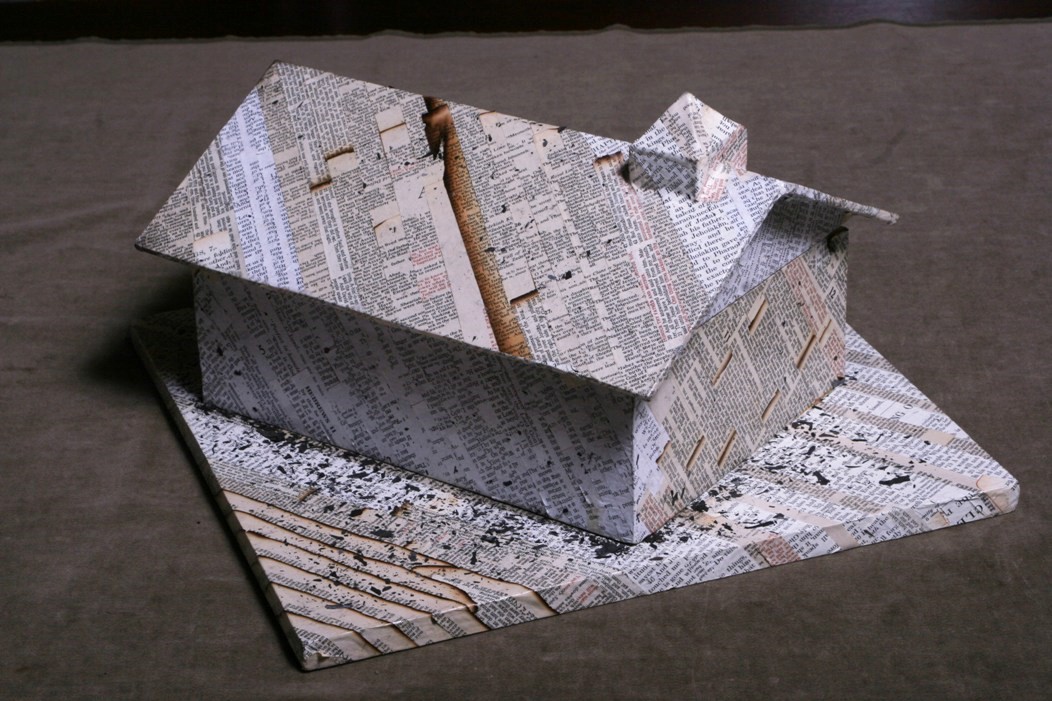Ashes refer us to the fire, indexing words we cannot read. They document what has been lost forever. As light as air, ashes flutter with a breath, they degrade, they will not last. Ashes tell us what has survived, what can be rebuilt, and what is irrevocably altered. Ashes bear witness.
Burnt church, a searing bookwork by Amos Paul Kennedy, Jr., offers testimony to violence against African American houses of worship. This simple wooden structure – four walls, roof, steeple – sits on a square platform. Every surface is covered with strips of biblical text, some browned, some edges charred. Ashes rest on the platform, scatter on the roof. When the roof is lifted, we find the remains of a burned bible inside.
Wesleyan’s Burnt church is one in a series built by Kennedy in response to the epidemic of burning of black churches in the South in the mid-1990s. In 1995 alone, more than 100 churches were set on fire, and many of them were burned to the ground. Congress passed the Church Arson Prevention Act in 1996, and it was signed into law by President Clinton. For each church lost, Kennedy burned a bible and built a small church to house it.
Burnt church was purchased from the artist during one of several visits to Wesleyan in the early 2000s. Kennedy’s work as a printer and book artist is documented in the film, Proceed and be Bold! Some scenes were filmed at Wesleyan’s Center for African American Studies, where Kennedy met with former professor Gina Ulysse.
This blog post is ninth in a series on ephemera in Wesleyan’s Special Collections & Archives, presented in conjunction with the Center for the Humanities’ Spring 2021 theme of Ephemera. On April 26th at 6 p.m., Vanessa Agard-Jones (Columbia) will lecture on “Empirical Ephemera.” Here is the full series calendar.
– Suzy Taraba, Director of Special Collections & Archives


